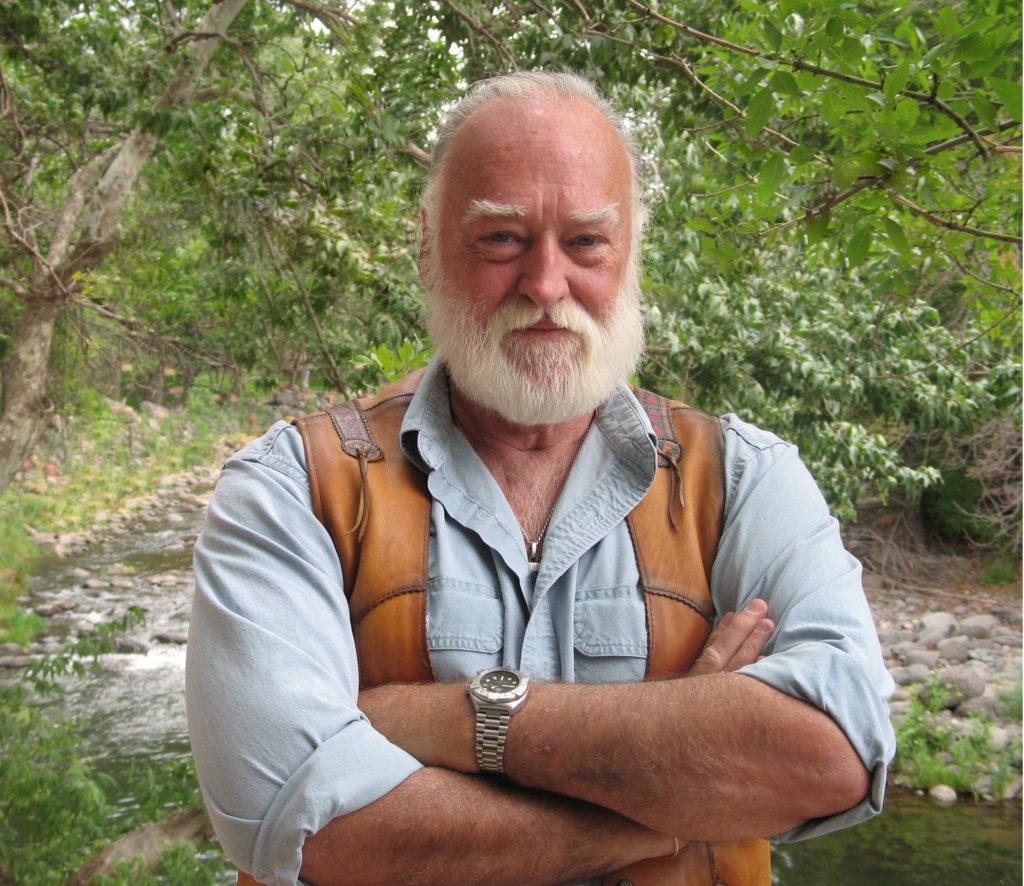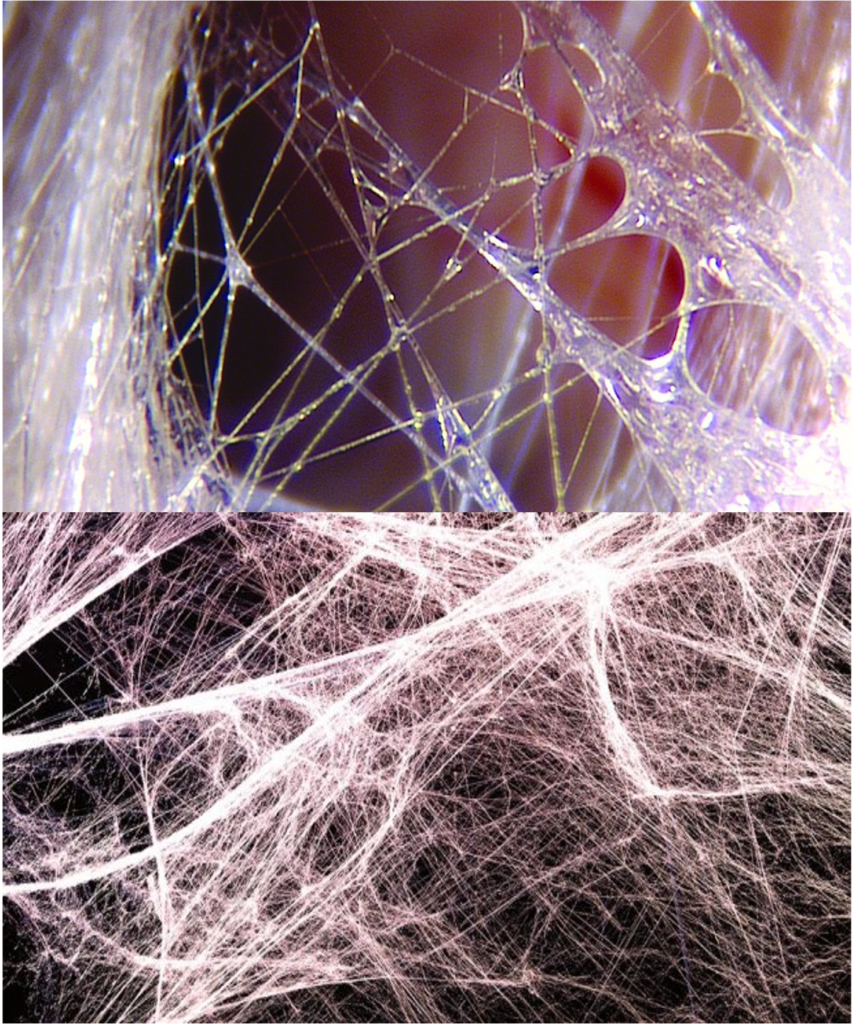Who is John F. Barnes?
John F. Barnes changed my life, and when I think of pioneers, I see his tan, creased face, sporting a white mustache and beard, surrounded by a lion’s mane of silver hair. He is one of the best teachers I ever learned from, and I use what he taught me every day. In fact, learning Myofascial Release was for me one of the deepest inner journeys of healing in my life. So who is Myofascial Release Pioneer John F. Barnes?
John is the creator of Myofascial Release Approach®, a way to eliminate pain and restore motion that involves applying gentle sustained pressure into the fascial connective tissue to find and resolve restrictions. Like many body workers, I had patients burst into tears during a session when I pressed on certain parts of their bodies. Because of what I learned from John, I knew that the tears were not random and that I had hit upon a place in the body which held trauma due to injury, surgery, or traumatic events that was ready to be released. Together we would work through the trauma physically and emotionally so that they healed fully and the pain did not recur. I saw, patient by patient, that Myofascial Release really worked.
Why is John F. Barnes a pioneer?
John’s discoveries have changed the world of body work and healing. He is an internationally recognized physical therapist, lecturer, author and the leading authority on Myofascial Release. Myofascial Release has exploded on the therapeutic scene with an unprecedented impact and is recognized as a most effective form of healthcare therapy.
Through his fifty years of experience and creative insight, John developed an innovative and highly effective whole-body approach for the evaluation and treatment of pain and dysfunction, a technique that is essential for releasing traumas due to injury, surgery, and other traumatic events. And perhaps most interesting to me, it’s a technique that respects the mind-body connection we all have but is rarely acknowledged. So what is the mind-body connection?
What is mind-body connection?
Mainstream beliefs about the mind-body connection are mostly based on misconceptions. Western medicine considers the body and the mind to be two separate things without any relation to each other. Therefore, if we have physical issues like injury or chronic pain, we go to a doctor, and if we have emotional issues, like destructive patterns or depression, we go to a psychotherapist. This obsolete way of thinking involves only the material level of our health, and ignores the emotional level as if it doesn’t exist. Emotions are a key element in self-care because they allow us to enter the mind-body conversation.
Separating the mind and body is like having a pile of computer components not hooked up with each other. The components alone do not make a computer – it’s how they are connected to each other that counts.
Ancient cultures believed the mind and body were intrinsically connected to one another, and that unresolved trauma held in the subconscious showed up as physical pain and emotional disfunction in every-day life. They knew that the key to healing contained both the mind and the body, and only by the mind and body working in unison could lasting healing occur.
And even in our daily human experience we can see that the mind and body work together. For instance, when we move our body, like during exercise or dance, our mind slows down and we experience more calmness. And when our thoughts are peaceful and constructive, pain and tension tend to decrease. So the body influences the mind and the mind influences the body.
The truth of this was confirmed for me at an early age. Because I was an anxious child, my mother took me to hatha yoga classes. I found that the stronger my body became, the more I could resist stress and bring order to the emotional chaos of my life. I gained focus and mental clarity and got my first revelation about the mind-body connection. What I didn’t know about was fascia, and learning what fascia is and how it works was an epiphany.
What is fascia and why should you care?
I believe that the greatest discovery of John F. Barnes is his revolutionary understanding of the fascia system, the missing link between the body and the mind. What is fascia and why should you care?
Fascia is a network of membranes, like a spider’s web or mycellium, that covers every muscle, bone, nerve, artery, and vein, and keeps your organs in place. Fascia is found everywhere in the body down to the smallest components of your tissues. Fascia is one continuous structure which connects every part of the body to every other part, like the yarn in a sweater. The fascia system has been called the forgotten system of the body, the missing link between the body and the mind.
Pain is a result of the fascia become restricted, as from injury, surgery, inflammatory responses, or trauma. In its normal state, fascia’s configuration is relaxed and wavy. It can stretch and move without restriction or pain. But fascia loses its pliability and becomes tight, restricted, and a source of tension to the rest of the body due to trauma or inflammation. These restrictions cause symptoms including pain, headaches, and restricted movement. Ultimately, fascia affect our flexibility, stamina, and ability to withstand stress and function in the world. A high percentage of people suffering with pain and/or lack of motion may be having fascial problems, but are not diagnosed or treated as such.
Myofascial Release Approach ®
For decades, John studied the fascia system and demonstrated how the structure of these membranes acts like crystals, from the piezoelectric effect to the recording of traumatic memories. In this way he showed that our consciousness is not just in the brain but also in the tissues of the body. Our traumas are stored in the tissues and the way to release them is through the body.
With myofascial release, a connection with past traumas and emotional blockages of the patient is often established, resulting in “miraculous” alleviation of pain and discomfort. The tissues of the body serve the purpose of storing consciousness and emotions. Your emotional history is recorded in your tissues.
Myofascial Release is a hands-on technique which promotes proper body mechanics and movement, self treatment, strengthening, improved flexibility, and postural and movement awareness. Practitioners use a variety of techniques and movement therapies to release physical constrictions and unblock traumas.
Neuro-psycho-immunology
Amazingly, similar discoveries have recently taken place in new branches of science relating to neuro-psycho-immunology. Within the neurosciences an area variously called “psychoneuroimmunology” and “neuroimmunomodulation” has recently emerged which seems on the verge of tracing the pathways between emotions and disease. This emerging new field combines the latest in the neurosciences with the latest in immunology to provide the scientific basis for understanding relationships between emotions and disease.
This complex multidisciplinary field aims at understanding the whole organism, rather than trying to analyze restricted areas. The developments are spectacular, and the new insights gained have already advanced our understanding of certain human diseases, such as autoimmune diseases, inflammatory diseases, nervous and endocrine abnormalities and the influence of behavioral factors and of aging on the immune response and disease. These scientific discoveries confirm the importance and influence of John’s discoveries, and will help Western medicine finally pay attention to both sides of the healing equation, physical and emotional.
John F. Barnes’ legacy
I admire Myofascial Release Pioneer John F. Barnes for his out of the box thinking and teachings which open the door to understand our human system as a complex but unified network filled with consciousness. The discovery of my own multidimensionality is my passion, and I am very grateful to have been able to progress in my understanding and self-healing thanks to John. And I’m thankful for John’s legacy in eliminating physical pain, healing emotional suffering, and bringing alignment to the structure of the body.
– Suteja, December 2021
Resources
Learn more about John F. Barnes and Myofascial Release Approach.
If you’re suffering pain or discomfort, find a Myofascial Release Approach practitioner who can help.
Read about other important healing pioneers: The Science Behind Sound Healing-Pioneer John Stuart Reid, and Health and Wellness Pioneers Suteja and Paula Grace
Learn more about natural healing and inner consciousness in Healing With the Moon, Wellness vs. Mainstream Medicine, What Are Mandalas and How Can They Benefit You? and Five Ways You Can Build Resilience According to the Ancients.
Learn more about healing and consciousness at Inner Treasure Hunt. If you liked this post, you can subscribe to the Inner Treasure Hunt newsletter to stay informed about new posts, programs, and events.
Please share this post with your friends! Just click below.



